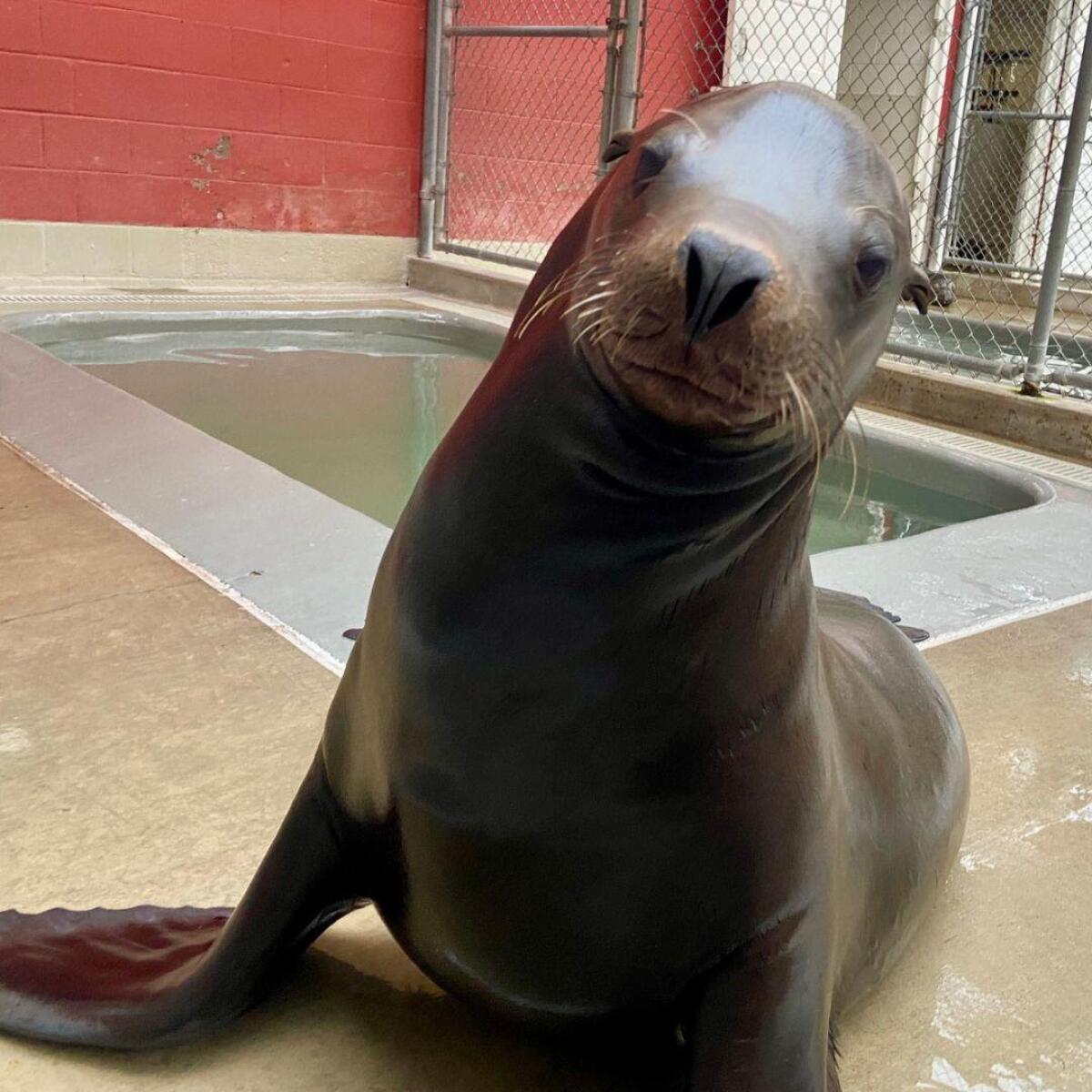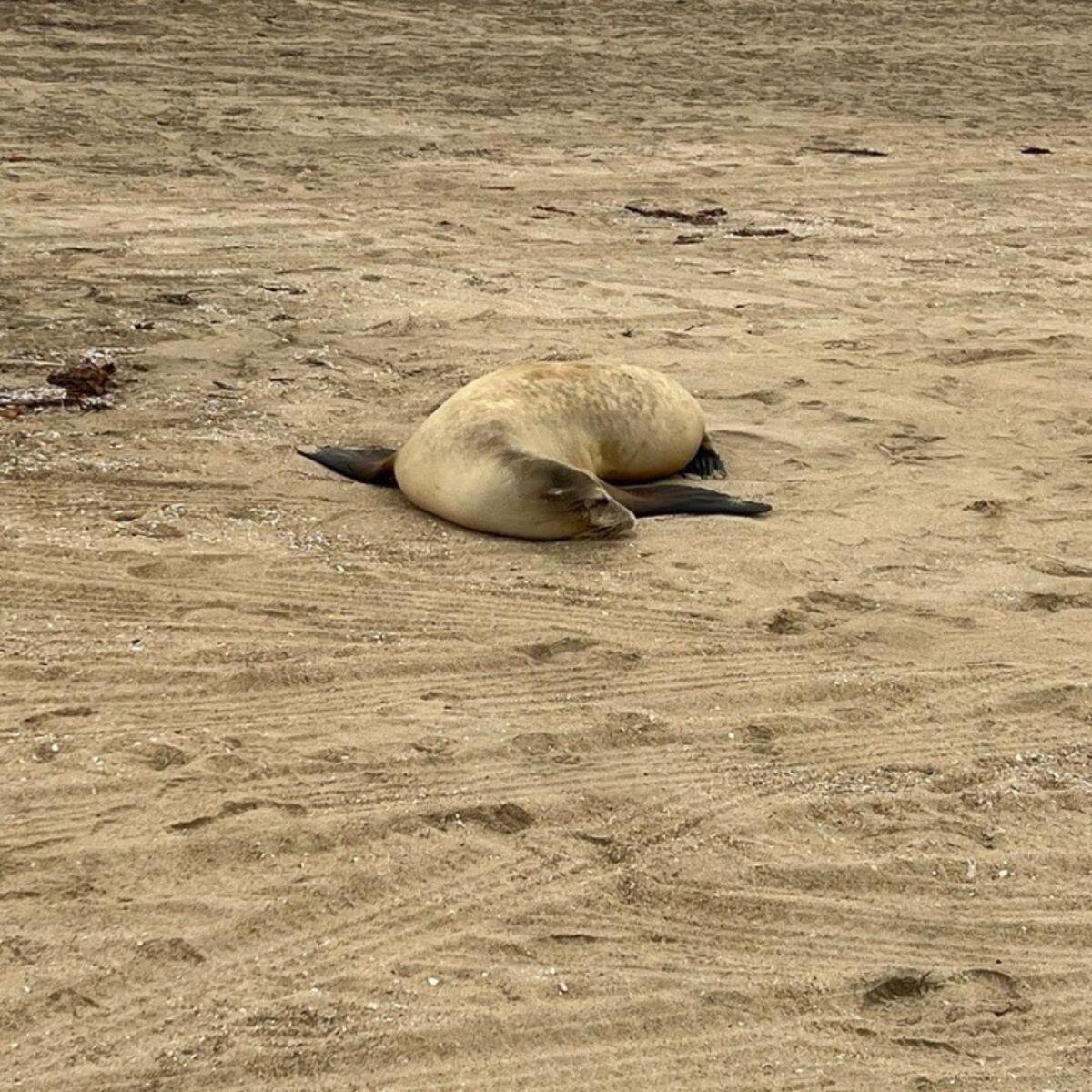Sea lions suffering seizures and dying on Orange County beaches due to neurotoxin-producing algae bloom

- Share via
An algae bloom pumping neurotoxins into the ocean has rescuers scrambling to save poisoned sea lions that have washed onto Orange County’s beaches on a near-daily basis since the beginning of June.
The animals are suffering from the effects of domoic acid. It’s being produced by a massive bloom of pseudo-nitzschia plankton that began off of the coast of San Luis Obispo and eventually spread into Orange County at the beginning of the month.
Reports of sea lions having seizures or dying on sands from Huntington Beach through Laguna Beach have been coming in practically every day since then, Dr. Alissa Deming of the Pacific Marine Mammal Center said. She warned concerned bystanders against trying to push the animals back into the water because they can react unexpectedly and weigh anywhere between 200 and 400 pounds. And doing so would prevent rescuers from getting a chance to treat them.

But their teams are spread thin in an attempt to reach as many poisoned animals as they can and struggling to pay for anti-seizure medications and other supplies needed to care for them, Deming said. The center has reached out to the public in an effort to raise emergency funds.
“We’re kind of losing count right now because they’re coming in nonstop,” she said Thursday. “We rescued four animals this morning already, and we’re kind of getting inundated with calls.”
The center is holding sea lions suffering the worst cases of domoic acid toxicity for prolonged treatment. As many as 14 had been in their care for an extended period as of Thursday. It was unclear if or when rescuers might be able to release them.
“If there’s really no healthy ocean to release them to because the bloom is still out there, what are we going to do?” Deming said. “And I think right now we will probably need to make space for the animals that are having seizures and really need care. So, we may end up in a position where we need to release some of the animals to make space, those that have completed their treatment and are doing well and are ready to go.”
All the latest on Orange County from Orange County.
Get our free TimesOC newsletter.
You may occasionally receive promotional content from the Daily Pilot.




